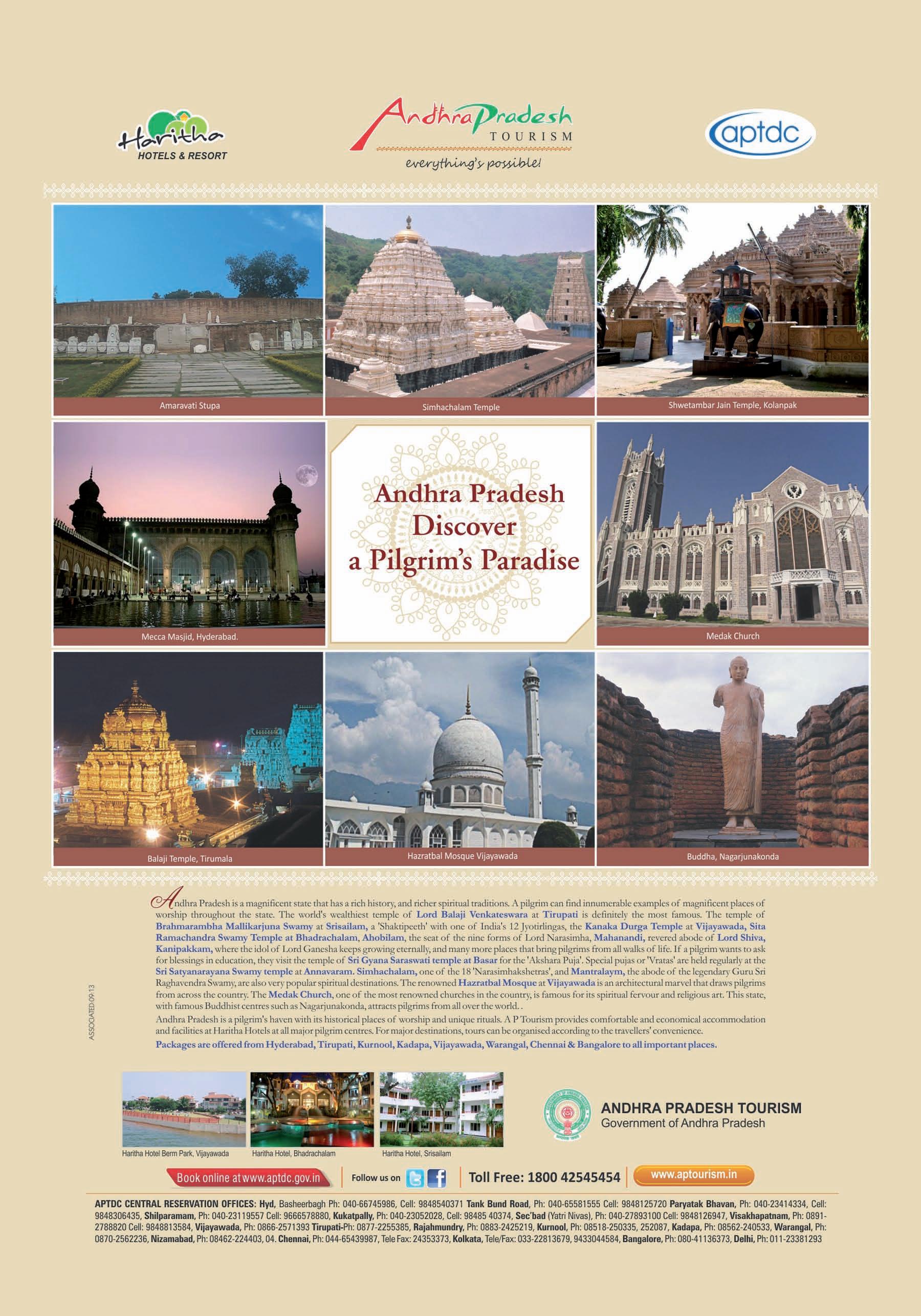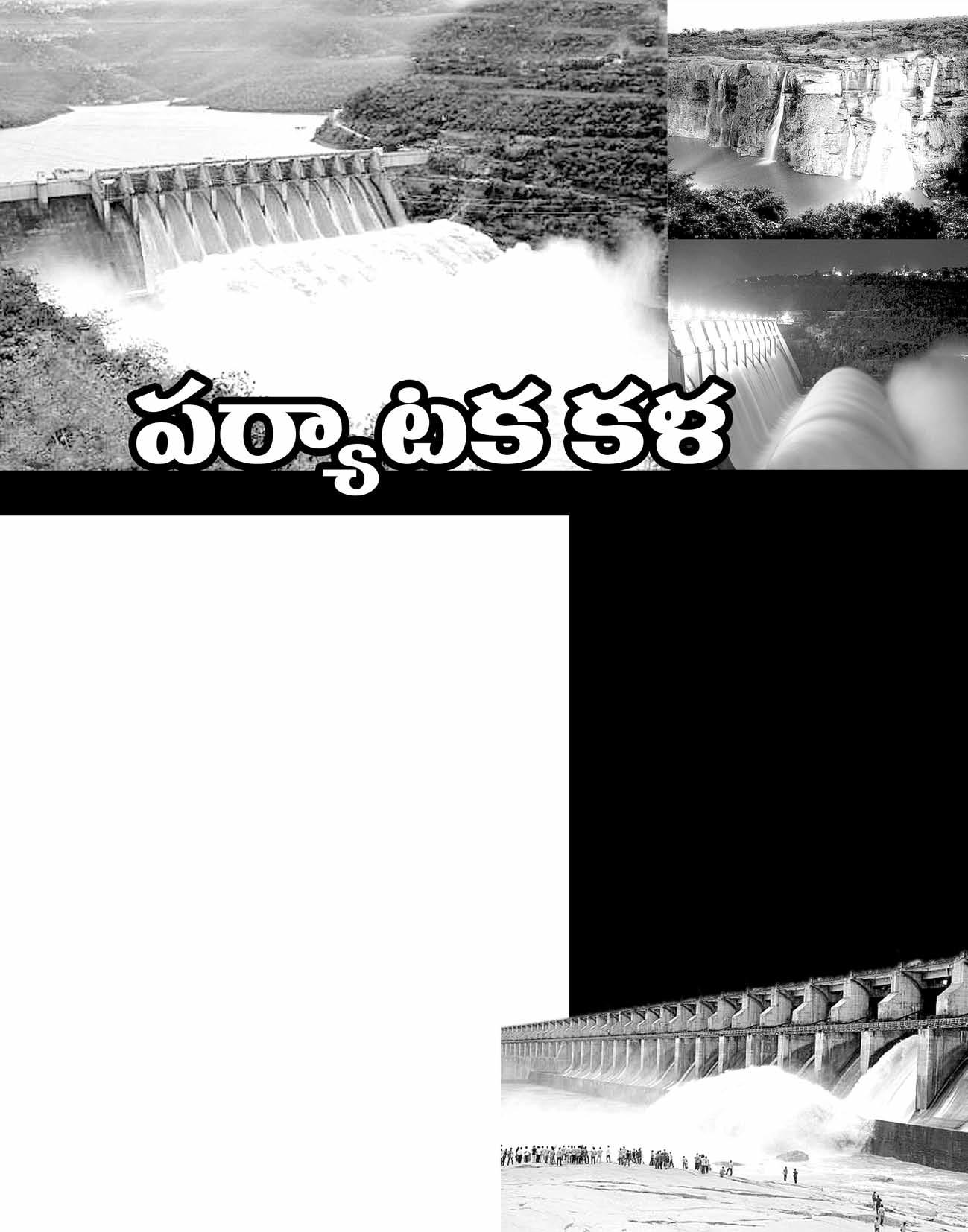
9 minute read
üsê´≥ø£ ø£fi¯
»˝bÕ‘ê\≈£î dü¬s’q Å|ü#ês¡+ ø£*Œ+ #·&É+˝À, »\bÕ‘ê\≈£î dü+ã+~Û+ ∫q düeTÅ>∑ düe÷#êsêìï Çe«&É+˝À Äj·÷ »\bÕ‘ê\ e<ä› |üsê´≥≈£î\≈£î ø±e\dæq dü<äTbÕj·÷\ ø£\Œq, »\bÕ‘ê\qT |üsê´≥ø£ ÅbÕ+‘ê\T>± r]Ã~<ä›&É+, s¡ø£åD #·s¡´\T, ≥÷]dtº ¬>’&é\ ìj·÷eTø£+ e+{Ï $wüj·÷ \ô|’ sêÅwüº |üsê´≥ø£ XÊK, sêÅwüº |üsê´≥ø£ n_Ûeè~∆ dü+düú <äèwæºô|{≤º*. |üsê´≥≈£î\T $X‚wü dü+K´˝À ˙{Ï ÁbÕC…≈£îº\qT dü+<ä]ÙdüTÔHêïs¡T.
m‹Ôb˛‘·\
Advertisement
m‹Ôb˛‘·\ »\bÕ‘·+ Hê>±s¡T®qkÕ>∑sY &Ü´yéT≈£î ~>∑Teq 11 øÏ˝ÀMT≥s¡¢ <ä÷s¡+˝À e⁄+~. ø£ècÕíq~ e⁄|üq~ #·+Á<äe+ø£ m‹Ôb˛ ‘·\ »\bÕ‘·+>± e÷]+~. #·+Á<äe+ø£ q~ 5, 6 bÕj·T\T>± N* <ë<ë|ü⁄ 70 n&ÉT>∑T\ m‘·TÔ qT+∫ ˇø£ ˝Àj·T˝ÀøÏ <ä÷≈£î‘·T+≥T+ ~. Ä <äèX¯´+ m+‘√ eTH√Vü≤s¡+>± e⁄+ ≥T+~. m‹Ôb˛‘·\ »\bÕ‘·+ düT+<äs¡ <äèXÊ´ìï sêÁ‹|üP≥ #·÷&É&ÜìøÏ s¡+>∑T s¡+>∑T\ $<äT´‘Y ˝…’≥T¢ @sêŒ≥T#˚XÊs¡T. $$<Ûä s¡+>∑T\ $<äT´‘Y ø±+‹˝À m‹Ôb˛‘·\ »\bÕ‘·+ dü+<äs¡Ù≈£î\qT eT+Á‘·eTT>∑T∆\qT #˚düTÔ+~. ø=+<äs¡T kÕVü≤dü |üsê´≥≈£î\T m‹Ôb˛‘·\ ˝Àj·T˝ÀøÏ yÓ[fl edüTÔ+{≤s¡T. Ä $<Ûä+>± kÕVü≤dü+ #˚ùd yês¡T ‘·–q C≤Á>∑‘·Ô\T bÕ{Ï+#ê*. ˝Ò≈£î+fÒ nbÕj·T+ yê]ì yÓHêï&ÉT‘·T+~. Çø£ Hê>±s¡T®qkÕ>∑sY »\ø£fi¯ >∑T]+∫ m+‘· sêdæHê ‘·≈£îÿy˚ ne⁄‘·T+~. kÕ>∑sY π>≥¢˝À qT+∫ m–dæ|ü&˚ ˙{Ï<äèX¯´+ dü+<äs¡Ù ≈£î\ eTqdüT˝À¢ düT+<äs¡eTTÁ<ä y˚düTÔ+~. sêÁwüº sê»<Ûëì ôV’≤<äsêu≤<äT qT+∫ ¬s+&ÉTqïs¡ >∑+≥\T Á|üj·÷DÏùdÔ Hê>±s¡T®qkÕ>∑sY #˚s¡Tø√e#·TÃ.
lXË’\+ ]»sê«j·TsY
lXË’\+ Á|üeTTK XË’eπøåÁ‘·+. lXË’\ eT*¢ø±s¡T®qkÕ«$T >∑T&ç˝Àì •e*+>∑+ <ë«<äX¯ CÀ´‹]¢+>±\˝À ˇø£{Ï. lXË’\+ |ü⁄D´πøåÁ‘·+ |üø£ÿH˚ ˇø£ ]»sê«j·TsY e⁄+~. lXË’\+ &Ü´+ ~>∑Teq ø£ècÕí ô|<ä›˝Àj·T˝À Á|üeVæ≤düTÔ+≥T+~. ø£ècÕíq~ì bÕ‘êfi¯>∑+>∑ nì |æ\TkÕÔs¡T. bÕ‘êfi¯>∑+>∑ #˚s¡Tø√e&ÜìøÏ eT÷&˚fi¯fl øÏ+<ä≥ s√|ty˚ @sêŒf…Æ+~. lXË’\ πøåÁ‘êìï #·÷&É&ÜìøÏ e∫Ãq j·÷Á‹≈£î\T ]»sê«j·TsYqT ≈£L&Ü dü+<ä]Ù düTÔ+{≤s¡T. ]»sê«sY π>≥T¢ ‘Ó]∫ q|ü⁄&ÉT ø£èwüíeTà ñs¡T≈£î\T, |üs¡T>∑T\qT ‘·ì$ rsê #·÷&Ée#·TÃ.
eT]ìï $esê\≈£î b.|æ.{Ï.&ç.dæ.ì dü+Á|ü~+#·+&ç: 040-66745976 9848540371
Hê>±s¡T®q kÕ>∑sY
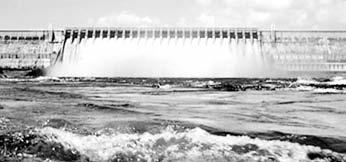
n j·T+. eT+EHê<∏é
sêÅcÕºìøÏ eT∞¢ »\ø£fi¯ e∫Ã+~. eTT+>±s¡T ‘·sê«‘· eT* esê¸\T ≈£L&Ü u≤>± |ü&É&É+‘√ sêj·T\d”eT $TqVü‰ sêÅwüº+˝Àì |ü\T ÁbÕC…≈£îº\T, »\bÕ‘ê\T Vü≤§j·T\T y=*øÏdüTÔ HêïsTT. >√<ëe], ÁøÏcÕí, ‘·T+>∑uÛÑÁ<ä ‘·~‘·s¡q<äT\ |üØ yêVü≤ø£ ÁbÕ+‘ê˝À¢ m>∑Teq yêq\T $kÕÔs¡+>± ≈£îs¡e&É+‘√ sêÅwüº+˝Àì ]»sê«j·TsY\˙ï ì+&ÜsTT. eTVü≤ã÷uŸq>∑sY õ˝≤¢ psê\ ÁbÕC…≈£îº, ìC≤e÷u≤<é õ˝≤¢ lsê+ kÕ>∑sY, sê»eT+Á&ç düMT|ü+˝Àì <Ûäefi‚X¯«s¡+ e<ä›>∑\ düsY Äs¡úsY ø±≥Hé Äqø£≥º, ÁøÏcÕíq~ô|’ e⁄qï Hê>±s¡T®q kÕ>∑sY, Á|üø±X¯+ u≤´πsõ, lXË’\+ ]»sê«j·TsY\T ì+&É&É+‘√ π>≥T¢ ‘Ós¡∫ Äj·÷ q<äT˝À¢øÏ ˙{Ïì e<ä*y˚XÊs¡T. Ä~˝≤u≤<é õ˝≤¢˝Àì ≈£î+‘·\, bı#ÓÃs¡, q˝§Z+&É õ˝≤¢˝Àì Hê>±s¡T®q kÕ>∑sY ~>∑Teq>∑\ m‹Ôb˛‘·\ »\bÕ‘·+, $XÊK|ü≥ï+ õ˝≤¢˝Àì nq+‘·–] »\<Ûës¡, ‘·÷s¡TŒ >√<ëe] õ˝≤¢ s¡+|ü#√&Ées¡+ »\bÕ‘·+, ø£&É|üõ˝≤¢ >∑+&çø√≥ e<ä›e⁄qï ô|Hêï ˝Àj·T eTTK´yÓTÆq$. ny˚>±ø£ ∫qï ∫qï ˙{Ï <Ûës¡\T, ø√q\T, sêÅwüº+˝À mH√ï e⁄HêïsTT. »\bÕ‘ê\ s¡a]ì #·÷&É&ÜìøÏ |üsê´≥≈£î\T ñ‘ê‡Vü≤ |ü&ÉT‘·THêïs¡T. ÁbÕC…≈£îº\ e<ä› |üsê´≥≈£î\≈£î eT]ìï edü‹ kÂø£sê´\≈£î ø£*Œ+#·&ÜìøÏ sêÁwüº |üsê´≥ø£ XÊK eT]ìï #·s¡´\T rdüTø√yê* .
lsê+ kÕ>∑sY
Majestic Monastery
Tawang Monastery is simply awe-inspiring and majestic in its appearance and grandeur. A visit of Tawang Monastery is most spiritually refreshing experience. The monastery also has a Centre for Buddhist Cultural Studies where young monks are taught Arithmetic, English, and Hindi besides traditional monastic education. The Tawang Gompa, situated at an altitude of 10,000 feet is located on a hill top and faces the rest of the Tawang town. This monastery is the fountainhead of the spiritual life of the people of Arunachal Pradesh region.
The Tawang Monastery also known as "GaldenNamgyalLhatse" was founded by Merak Lama LodreGyamtso in the year 1860-61 AD. The Tawang Monastery stands on the sart of hill, about 10,000ft above sea level and has ravines in the south and west, narrow ridge on the north and a gradual slope on the east. It offers an imposing and picturesque view of the Tawang -Chu valley. The monastery appears like a fort from a distance, as if guarding the admirers in the wide valley below.
Tawang monastery is the largest of its kind in the country and 2nd largest in Asia.Though it has the capacity for housing about seven hundred monks, the actual number of resident Lamas (Monks) at present is a little more than 300. This monastery is the fountainhead of the spiritual life of the people of this region. The Tawang Gompa, situated at an altitude of 10,000 feet is located on a hill top and faces the rest of the Tawang town. The snow capped Eastern Himalayas surrounding it give it a majestic look. It is about 3 kilometres from the old market road of Tawang. Founded by Merak Lama Lodre Gyamtso, the Tawang Gompa is an epitome of Buddhist architecture and belongs to Gelukpa sect. One of the main attractions of Tawang monastery is its huge gilded statue of Lord Buddha. It also houses a rich collection of invaluable manuscripts, books and thankas (depicting Lord Buddha as well as other tutelary deitiesin diverse poses. This monastery dates back to the year 186061 and holds a special place in Buddhist monastery for being the birthplace of the 6th Dalai Lama. This monastery, like most other Buddhist monasteries is very well decorated and the colours and designs are very ornate. Tawang town (india) is located approximately 555 km from Guwahati. Tawang has an average elevation of 8,756 feet.
There is no airport or railhead in Tawang. Tezpur is the closest place, which offers an airport. n Kovvuri Ganapathi Reddy

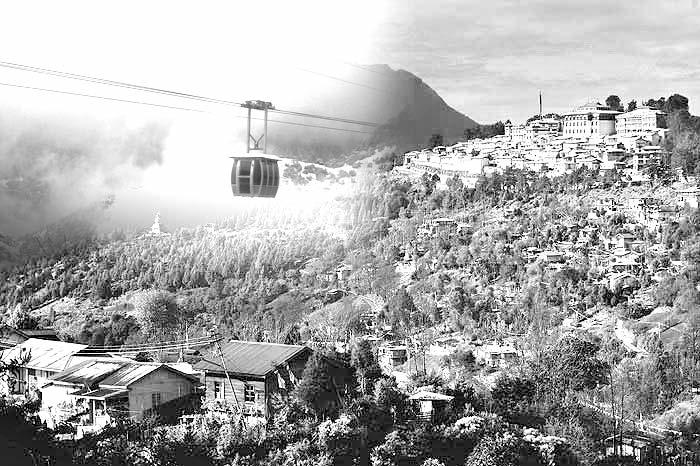
The torrential Banganga river deep in the valley forming a formidable sheer and the Kangra Fort lurking atop the flat mountain range is a scene that one encounters on nearing Kangra town when you drive from ShimlaMataur national highway. A feeling of awe mixed with joy pervades you as you look back in time. The Kangra Fort is 3 kms from the town and is also known as Nagarkot. The fort is historically significant; its massive size, and the beauty of its structure lend it an added charm. At the entrance is a museum containing some valuable old photographs of the fort prior to the devastating earthquake of 1905 and some exquisite stone sculptures, carvings, idols and other artifacts.
The climb leads through seven gates, en route there are some idols embossed in the walls of the fort. The ramparts open out to the fascinating valleys below and one can recreate the past and glide the corridors of history . There are three richly carved temples in the vicinity-Lakshmi Narayan temple, the Ambika temple and a Jain temple of Mahaveera.
The view of gushing streams of Banganga and Manjhi rivers from the Fort is charming. The Kangra Fort was the seat of power of the Katoch Raja's and is believed to have been founded by Shusharma Chand Katoch. It was the ancient capital of the Katoch Kingdom and symbol of power in the Punjab hill states. The Fort of Nagarkot (Kangra) stands as a mute witness to the ravages of conquerors from Mahmud of Ghazni (1009 AD) to the emperor Jehangir (1619 AD) and the disastrous earthquake of April, 1905. Emperor Akbar made many attempts to capture this fort but could not succeed. This place is now called as " Purana Kangra". One can enter the fort by a narrow path. It was protected by a number of gates named after its winners like Jehangir, Ranjit Singh.
The fort remained neglected during the British period but now the Archaeological department maintains it. The Fort is still an attraction to the tourists and the pilgrims visiting Kangra. The historical Kangra Fort is 3 km from the Kangra town. One can reach Kangra town by road, rail & air. Kangra is 17 km from Dharamshala, 220 km from Shimla and 235 km from Chandigarh. n K. Balasubramanyam in New Delhi
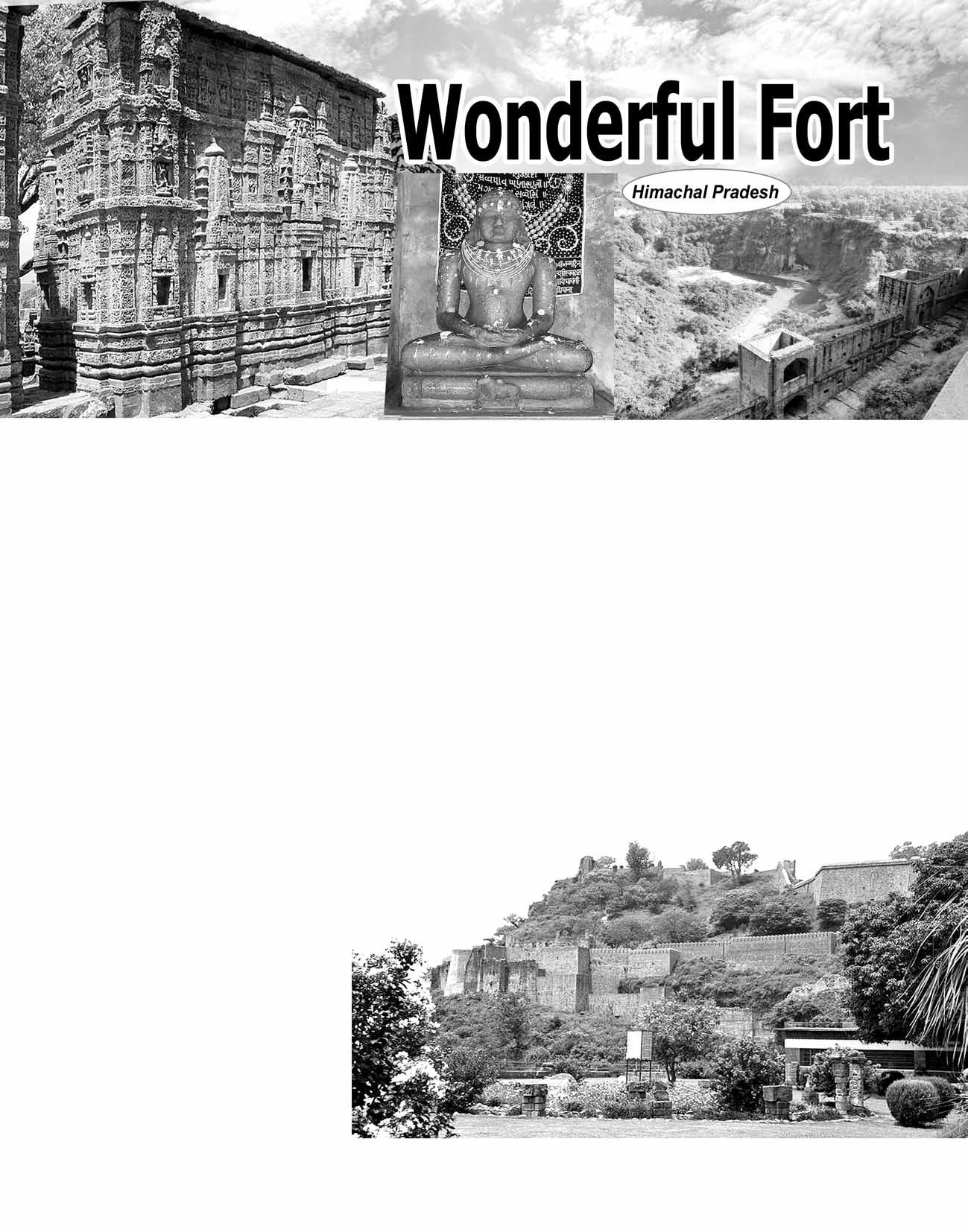

ncÕº<äX¯ X¯øÏÔ|”sƒê˝À¢ n\+|ü⁄s¡+ CÀ>∑T˝≤+ã Ä\j·T+ ˇø£{Ï. Çø£ÿ&É yÓ\dæq CÀ>∑T˝≤+ã neTàyês¡T dü+‘êq es¡Á|ü<ësTTì>± Á|üdæ~∆¬øø±ÿs¡T. n<äT“¤‘· Ä\j·÷\T nø£ÿ&É ø=\TyÓ’ e⁄HêïsTT. Ä Ä\j·÷˝À¢ n‘·´<äT“¤‘· •\Œ dü+|ü<ä<ë– e⁄+~. ø=ìï e+<ä\ dü+e‘·‡sê\ bÕ≥T Ä <˚yê\j·÷\T ì]à‘·eTj·÷´sTT. ne˙ï •e‘·‘ê«ìøÏ Á|ürø£˝Ò. nsTTHê ...ˇø√ÿ>∑T&ç ˇø√ÿs¡ø£yÓTÆq XË’*øÏ ì<äs¡Ùq+>± e⁄+~. ñ‘·Ôsê~øÏ #Ó+~q >∑T|ü⁄Ô\ ø±\+ qT+∫ <äøÏåD≤~øÏ #Ó+~q $»j·Tq>∑s¡+ (Vü≤+|”) #·Áø£es¡TÔ\ es¡≈£î |ü\Te⁄s¡T sêE\T n<äT“¤‘· Ä\j·÷\ Ä$wüÿs¡D≈£î ø£èwæ #˚XÊs¡T. n≥Te+{Ï ns¡T<Ó’q Á|ü<˚X¯y˚T...n\+|ü⁄s¡+. n\+|ü⁄s¡+ eTVü≤ã÷uŸq>∑sY õ˝≤¢˝À e⁄+~. ôV’≤<ës¡u≤<é≈£î 200øÏ.MT ø£s¡÷ï\T ≈£î 27øÏ.MT <ä÷s¡+˝À e⁄+~. n\+|ü⁄s¡+˝Àì u≤\ÁãùV≤àX¯« sê\j·T+˝Àì *+>∑+ CÀ´‹sY*+>∑+>± Á|üdæ~∆ #Ó+~+~.
CÀ>∑T˝≤+ã>± |üP»\+<äTø=+≥Tqï X¯øÏÔe÷‘· >∑T&ç 18 X¯øÏÔ |”sƒê˝À¢ ˇø£{Ï. qeÁãVü≤à\ >∑Tfi¯ófl˝Àì •e⁄&ÉT, X¯øÏÔe÷‘·- CÀ>∑T˝≤+ã, Á>±eT<˚e‘· m\¢eTà, uÛÑ÷<˚$, qs¡dæ+Vü≤kÕ«$T, Ä+»H˚j·TT&ÉT uÛÑ≈£îÔ\qT ÁuÀdüTÔHêïs¡T. X¯øÏÔe÷‘· düìï~Ûô|’ ª≥÷]»+ q÷´dtµ ø£<∏äq+.

CÀ>∑T˝≤+ã Ä\j·÷ìï ãVüQeT˙ düT˝≤ÔqT\T Áø°.X¯ 14e X¯‘êã›+˝À $<Ûä«+dü+ #˚dæHês¡T. CÀ>∑T˝≤+ã #·+&ç- #êeTT+&ç X¯øÏÔ $Á>∑Vü‰\qT yê] $<Ûä«+dü ø±+&É≈£î ã*ø±≈£î+&Ü ø±bÕ&ç ÁãVü‰à\j·T+˝À <ë#ês¡T. bÕ‘·>∑T&ç e⁄+&çq Á|ü<˚X¯+˝ÀH˚ ø=‘·Ô>± Ä\j·T+ ì]à+∫ 2005˝À Ä $Á>∑Vü‰\qT Á|ü‹wæ˜+#ês¡T. #·ø£ÿ{Ï Á>±HÓ’{Ÿ sêfi¯fl‘√ düT+<äs¡+>± ì]à+∫q Ä\j·T+ #·T≥÷º düs√es¡+ ñ+&É&É+ $X‚wü+. neTàyês¡T X¯øÏÔ dü«s¡÷|æDÏ n+<äT˝ÀqT ñÁ>∑eT÷]Ô. Ä\j·T+˝À neTàyês¡T
≈£Ls=Ãqï uÛÑ+–eT˝À e⁄+~. $X‚wü πøX¯dü+|ü<ä‘√ n\sês¡T‘·Tqï~. Ä $s¡uÀdæq πøXÊ\˝À ã\T¢\T, ‘˚fi¯ófl,
ø£+ø±fi≤\T ìøÏå|üÔ+>± e⁄HêïsTT. Ä\j·T+˝À Ç+ø± dü|üÔ e÷‘·èø£\T, $ù|òTïX¯«s¡T&ÉT, MD≤bÕDÏ, Ms¡uÛÑÁ<ÛäTì $Á>∑Vü‰\qT ≈£L&Ü Á|ü‹wæ˜+#ês¡T.
lXË’\+ πøåÁ‘êìøÏ n\+|ü⁄s¡+ |ü&ÉeT{Ï <ë«s¡+>± ù|s=ÿ+{≤s¡T. n\+|ü⁄s¡+ •eπøåÁ‘êìï <äøÏåD ¬ø’˝≤dü+>± uÛ≤$kÕÔs¡T. Ä |ü⁄D´Á|ü<˚X¯+˝À ªªqeÁãVü‰à\j·÷\Tµµ HêïsTT. n$ n˙ï XË’eπøåÁ‘ê˝Ò. Ä Ä\j·÷\T u≤<ë$T #êfi¯ó≈£î´\ ø±\+˝À ì]à+∫q≥T¢ #ê]Á‹ø£ Ä<Ûësê\THêïsTT. düTe÷s¡T 200 dü+e‘·‡sê\T u≤<ë$T #êfi¯ó≈£î´\T sê»´bÕ\q #˚j·T>±, Äø±\+˝À yês¡T mH√ï Ä\j·÷\T ì]à+#ês¡T. n\+|ü⁄s¡+˝Àì Ä\j·÷\ ìsêà D≤\T 6e X¯‘êã∆+˝À »]>±sTT. Ä ÁbÕ+‘êìï ªªqeÁãùV≤àX¯«s¡ rs¡ú+>±µµ |æ\TkÕÔs¡T. ø±>± lXË’\+ eTT+|ü⁄ ÁbÕ+‘·+˝À eTTì– b˛‘·Tqï Ä\j·÷\˝Àì eT÷s¡TÔ\qT, |ü⁄sê‘·‘·«XÊK yês¡T »]|æq Á‘·e«ø±\˝À \uÛÑ´eTsTTq nH˚ø£ •˝≤ $Á>∑Vü‰\qT Ä\+|ü⁄s¡+˝Àì eT÷´õj·T+˝À e⁄+#ês¡T. j·÷Á‹≈£î\T
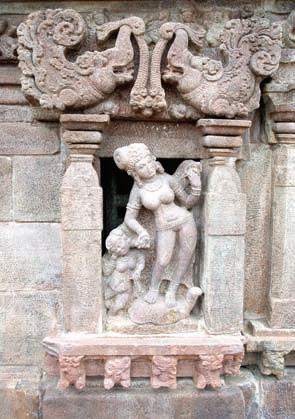



eT÷´õj·T+˝À uÛÑÁ<ä |üs¡∫q •˝≤ $Á>∑Vü‰\ qT #·÷&Ée#·TÃ. Á|ü<äs¡Ùq ˝À e⁄+∫q ÄH˚ø£ •˝≤Œ\T XË’edü+düÿè‹øÏ #Ó+~q$. n\+|ü⁄s¡+ ÁbÕ+‘êìï XÊ‘·yêVü≤qT\T, Hê>±s¡T®q ø=+&É Çø屫≈£î\T, u≤<ë$T #êfi¯ó≈£î´\T, sêÁwüº≈£L≥T \T, ø£fi≤´DÏ #êfi¯ó≈£î´\T, ø±ø£rj·TT\T, $»j·Tq>∑s¡ sêE\T, >√\ÿ+&É qyêãT \T bÕ*+∫q+<äTq Äj·÷sêC≤´\ •\ŒXË’* n\+|ü⁄s¡+ Ä\j·÷˝À¢ n>∑T|ædüTÔ+~. $»j·T q>∑s¡ sêE\ ø±\+˝À Ä Ä\j·÷\T eT]+‘· XÀ_Û+∫q≥T¢>± XÊdüHê<Ûësê\THêïsTT.
Áø°.X¯. 1101Hê{Ï •˝≤XÊdüq+˝À Ä ÁbÕ+‘êìï ªVü‰\+|ü⁄s¡+>±µ |æ*#˚yês¡ì ‘Ó\TdüTÔqï~. ø±\Áø£eT+˝À n\+|ü⁄s¡+ nsTT+~. n\+|ü⁄s¡+˝À yÓ\dæq qeÁãVü‰à\j·÷\˝Àì •\Œø£fi≤kÂ+<ës¡´ìøÏ j·÷Á‹≈£î\T eTT>∑T∆\e⁄‘ês¡T.
‘·T+>∑uÛÑÁ<ä m&ÉeT rs¡+˝À ªªqeÁãVü‰à\j·÷\µµ düeT÷Vü≤+ e⁄+~. Ä\j·÷\T •e |üs¡e÷‘·à≈£î n+øÏ‘·eTsTTq$. Ä\j·÷\ô|’ $X‚wü+>± Ä<äs¡D #·÷|ü⁄‘·÷ ‘·s¡* edüTÔqï j·÷Á‹≈£î\T y˚˝≤~>± e⁄+{≤s¡T. Ä Ä\j·÷\ düeTT<ëj·÷ìï dü+<ä]ÙùdÔ ªªø±•µµ |ü⁄D´πøåÁ‘êìï #·÷kı∫Ãq nqT uÛÑ÷‹ ø£\T>∑T‘·T+~. m+<äTø£+fÒ ø±o˝Àì $X‚«X¯«s¡ Ä\j·÷ìøÏ Ä\+|ü⁄s¡+ ˝Àì Ä\j·T düeTT<ëj·÷\≈£î b˛*ø£\THêïsTT. eTTK´+>± Ä\j·T •Ksê\T uÛÖ<ë∆sêe÷\qT >∑Ts¡TÔ≈£î‘ÓkÕÔsTT.
Ç˝≤e⁄+&É>± qeÁãVü‰à\j·÷\T yÓTT‘·Ô+ ‘=$Tà~ $&ç$&ç Ä\j·÷\T n$ ‘ês¡ø£ÁãVü≤à, dü«s¡íÁãVü≤à, |ü<äà ÁãVü≤à, u≤\ÁãVü≤à, >∑s¡T&ÉÁãVü≤à, ≈£îe÷s¡ ÁãVü≤à, ns¡ÿÁãVü≤à, Ms¡ÁãVü≤à, $X¯«ÁãVü≤à, á ‘=$Tà~ Ä\j·÷\T ˇπø Äes¡D˝À e⁄+&É&É+ $X‚wü+. Ç+<äT˝À u≤\ÁãVü≤à\j·T+ eTTK´eTsTT+~. Ä\j·T |ü]düs¡ ÁbÕ+‘ê\˝Àì •˝≤XÊdüq+ Á|üø±s¡+ Ä\j·TìsêàD+ Áø°.X¯ 702 ˝À »]–+~. Á|ü‹ dü+e‘·‡s¡+ eTVü‰ •esêÁ‹ ñ‘·‡yê\T n‘·´+‘· yÓ’uÛÑe+>± »s¡T>∑T‘êsTT. y˚˝≤~>± uÛÑ≈£îÔ\T ñ‘·‡yê˝À¢ bÕ˝§Z+{≤s¡T.
‘ês¡ø£ ÁãVü‰à\j·T+ bÕøÏåø£+>± •~Û\eTsTT+~. Áø°.X¯. 6-7 X¯‘êu≤∆˝À¢ ‘Ó\T>∑T˝À #ÓøÏÿq XÊdüHê\THêïsTT.
dü«s¡Z ÁãVü‰à\j·T+ >√|ü⁄s¡+ n‘·´+‘· Äø£s¡¸D°j·T+>± e⁄+~. Ä\+|ü⁄s¡+˝Àì nìï Ä\j·÷\ ø£+fÒ, düT+<äs¡eTsTTq •˝≤Œ\‘√ n\sêπs Ä\j·T$T~. #êfi¯ó≈£î´\ •\Œø£fi≤ XË’*‘√ XÀ_Ûdü÷Ôe⁄+~. eTTK´+>± Ä\j·T+ >√&É\≈£îqï •\Œø£fi≤düeTT<ëj·÷\T, |ü⁄sêDÒ‹Vü‰kÕ\˝Àì nH˚ø£ eTTK´|òüT{≤º\qT n‘·´+‘· HÓ’|ü⁄D´+‘√ #Óø£ÿã&ܶsTT. Ä\j·T+ <ë<ë|ü⁄ Áø°.X¯ 8e X¯‘êã›+˝À ì]à‘·eTsTT+~. |ü<äà ÁãVü‰à\j·T+ ≈£L&Ü •~∏˝≤edüú˝À e⁄+~. Çø£ÿ&É e⁄qï •e*+>∑+ n‘·´+‘· eTH√Vü≤s¡+>±, yÓT]ùd˝≤ e⁄+&É&É+ $X‚wü+. $X¯«ÁãVü‰à\j·T+ eTTK´yÓTÆq~. |ü⁄sêD≤\˝Àì nH˚ø£ |òüT{≤º\qT Á|ü‹_+_+#˚ •˝≤Œ\T Ä\j·T>√&É\ô|’ #Óø±ÿs¡T. n<˚ ÁbÕ+>∑D+˝ÀH˚ 9e X¯‘êã›+˝À ì]à+∫q dü÷s¡´Hêsêj·TD Ä\j·T+ e⁄+~. <äXÊe‘êsê\ $X‚cÕ\qT $e]+#˚ ns¡∆_+u≤\ düe÷Vü‰sê\T mH√ï #·÷&Ée#·TÃ. Ä |ü]düsê\˝ÀH˚ qs¡dæ+Vü‰\j·T+ ≈£L&Ü ñ+~. $»j·Tq>∑s¡ sêE\ ø±\+˝À ìsêàD+ »]–q≥T¢>± XÊdüHê<Ûësê\THêïsTT.
düTe÷s¡T 20øÏ ô|’H˚ ÁbÕNq Ä\j·÷\qT n\+|ü⁄s¡+˝À #·÷&Ée#·TÃ. eTTK´+>± ˇø£<ëì˝≤ eTs=ø£{Ï e⁄+&É<äT. <˚ìø£<˚ Á|ü‘˚´ø£+. bÕ|ü HêX‚X¯«s¡ Ä\j·T+ eTs√ $X‚wü+. n<äT“¤‘· Ä\j·÷\‘√ n\sêπs
Ä\+|ü⁄s¡+ |ü≥ºD≤ìï ªªdæ{° Ä|òt f…+|ü⁄˝Ÿ‡µµ>± |æ\TkÕÔs¡T. Ä\j·÷\T uÛ≤s¡‘·<˚X¯ |ü⁄sê‘·‘·« XÊKyê] dü+s¡ø£åD˝À e⁄HêïsTT. nø£ÿ&É yÓ\dæq eTs√ eTTK´eTsTTq <˚yê\ j·T+ ø£+∫ø±e÷øÏå >∑T&ç. nìï Ä\j·÷\T ˇø£ ÁbÕ+‘·+˝À ñ+&É&É+ $X‚wüeTsTT‘˚, ˇø£ Ä\j·÷ìøÏ eTs=ø£ Ä\j·÷ìøÏ b˛*ø£\T ˝Ò≈£î+&Ü e⁄+&É&É+, ˇø£<ëìï $T+∫ eTs=ø£{Ï •\Œø£fi≤ #ê‘·Tsê´\‘√ n\sês¡T ‘·T+&É&É+‘√ uÛÑ≈£îÔ\T |üs¡e•kÕÔs¡T. n\+|ü⁄s¡+ j·÷Á‘· ˇø£ eT<ÛäTsêqTuÛÑ÷‹ì ø£*–düTÔ+<äì #Ó|üŒe#·TÃ.
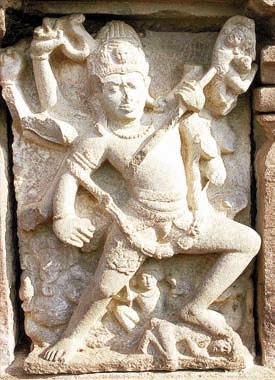
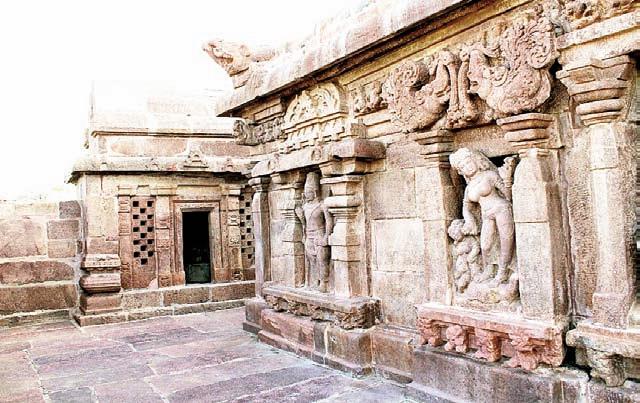
Tourism News (Telugu Bi-Monthly) November - December 2013, Volume : 6 Issue : 6 RNI No. APTEL / 2007 / 22572. www.tourismnews.co.in Printed, Published and Owned by MyNaa Swamy and Printed at C.N. Printers, Prakasam Road, Tirupati and Published at No. 19-12-372, Upstairs, Bairagipatteda, Tirupati - 517 501. Editor : MyNaa Swamy Ph : 95026 59119 Email : tourismnews2007@yahoo.co.in

